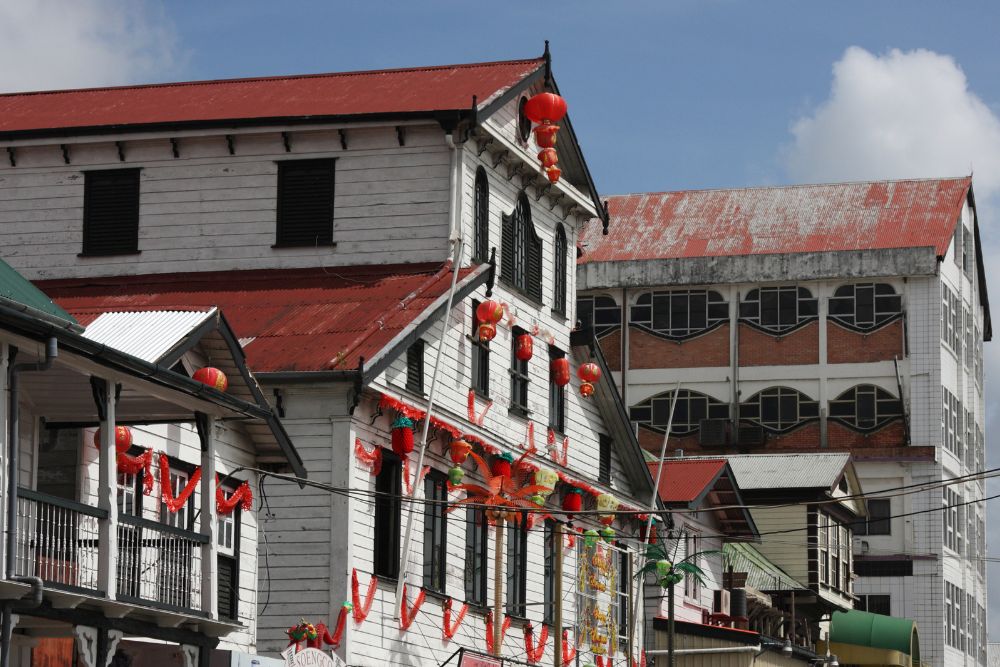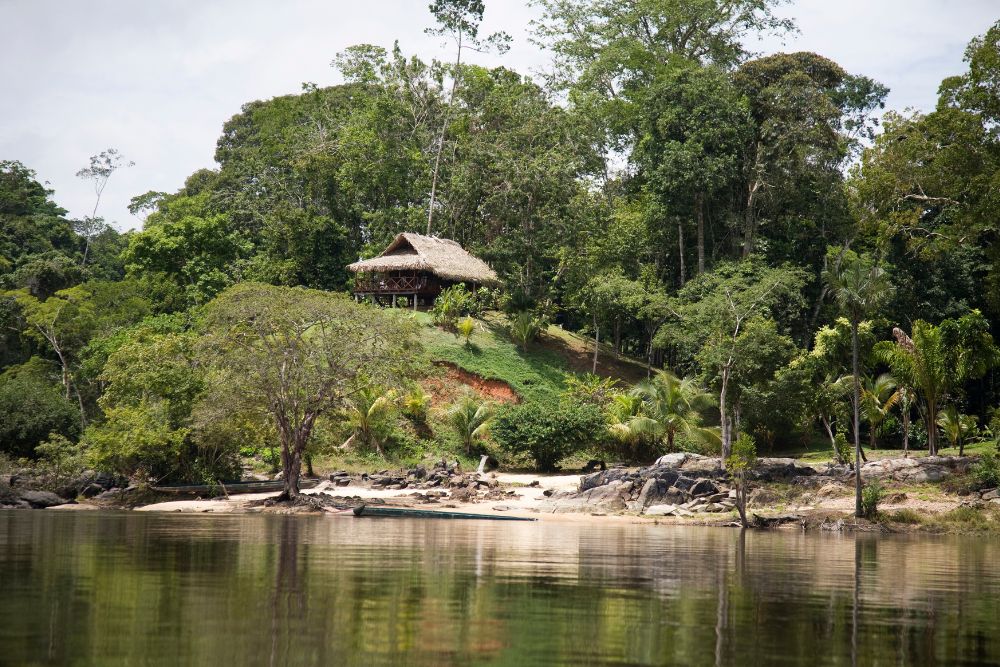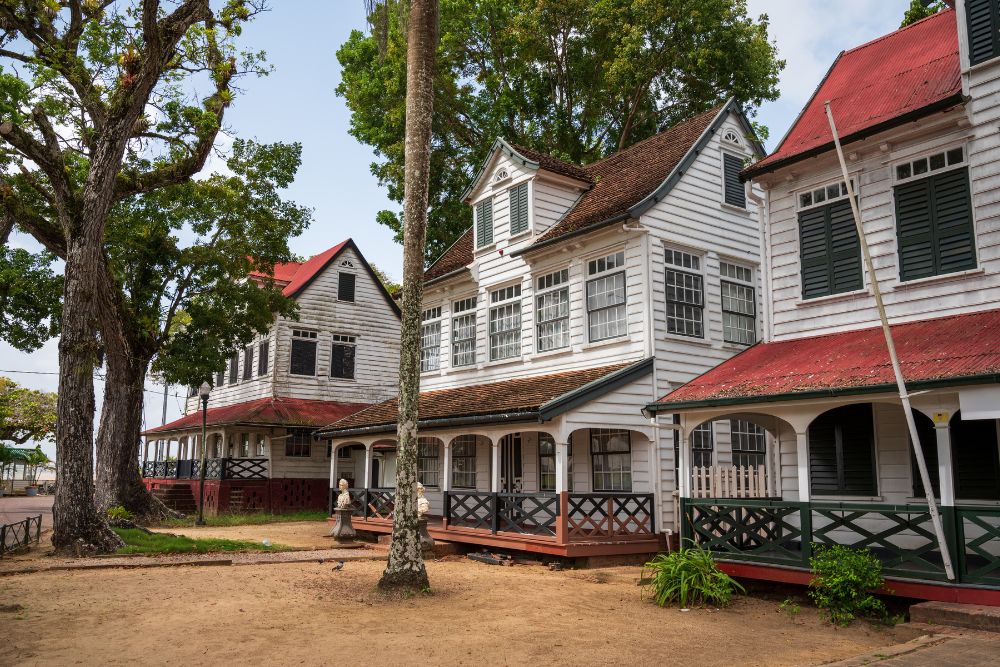Suriname is South America’s smallest country, but don’t let its tiny size fool you! Suriname is a melting pot of culture, Dutch architecture and natural beauty.
I have curated some of the most interesting facts about Suriname that’ll make you add this country to your bucket list
1. More Than 50% Of Suriname’s Population Lives In The Country Capital
Paramaribo, the capital of Suriname, is home to more than 50% of the country’s population.
Roughly 250,000 people live in this city located on the banks of the Suriname river banks, and it’s the largest city in the country.
2. There Is Only One Cinema Hall In Suriname
Suriname has only one cinema theate which can be found in Paramaribo.
And unlike the west, T.B.L. Cinemas only run part-time during the day. On weekdays, shows run from 4:00 PM to 8:30 PM, whereas on Saturday and Sunday, shows run from 12:30 PM to 8:30 PM.
3. Suriname Drive On The Left, Defying Most Of South America
Most South American countries drive on the right, whereas Guyana and Suriname have chosen the other side. For Suriname, the influence of this rule is due to the country’s proximity to the Dutch colonies, as Dutch colonies would drive on the left.
4. While Small, Suriname Has Vast Ethnic Diversity
The population of Suriname is diverse in terms of ethnicity. Communities such as Creole, Maroon, East Indians, Chinese, Amerindian, Javanese, White, and many others consider Suriname their native country.
The country also supports marriages between different ethnic groups, with many children having mixed ethnicity.
5. Home To 2 UNESCO World Heritage Sites
The two UNESCO World Heritage Sites are the Inner City of Paramaribo (inscribed in 2002) and Central Suriname Natural Reserve (inscribed in 2000).


The Cassipora Cemetery and Joden Savanne Settlement are also on the tentative list of UNESCO.
6. Suriname Finds Joy In Celebrating A Lot Of Festivals
As Suriname is home to many ethnicities, the country celebrates many festivals and portrays a rich culture throughout the year.
Some of the common celebrations you will witness in the country are Holi, Javanese Arrival Day, Christmas, Day of the Maroons, Indian Arrival Day, Eid u;-Fitr, Diwali, and Good Friday.
Outside of these special dates, there are many ceremonies and religious festivals. Suriname has a high degree of religious tolerance, with worship places for almost all religions.
7. Suriname Has A Mandatory Education Rule For Children
All children are required to attend school until 12 years old, with Dutch being the mandatory language subject in every school.
The entire education system is based on the Netherlands curriculum, with around 85% of all children in Suriname completing their primary education.
8. Suriname Food Isn’t Ritzy Or Fancy
Suriname’s national dish is a simple plate of rice and chicken. They don’t have fancy dishes to flaunt their country’s recognition, despite their vast ethnicity. The national dish is enjoyed by many everyday.
9. Around 94% Of Suriname Is Covered With Rain Forest
More than 94% of the country’s lands are covered by natural tropical rainforests, making Suriname one of the most forested countries globally.
These rainforests are home to many rare plant and animal species, so locals avoid cutting down trees. Interestingly, they also organize events to plant more trees in a country already full of rainforests.
10. Suriname Is A Major Exporter Of Gold
Suriname is a renouned exporter of gold, rough wood, non-fillet fish (frozen), refined petroleum and rice. Gold exports account for roughly $2 billion in revenue per year, accounting for around 67% of Suriname’s total exports.
11. Suriname Bidded Farewell To Slavery In 1863
Powerful people in Suriname were still importing slaves from North Africa until the mid 19th century, which contributed to Suriname’s population growth.
In 1863, slavery was abolished in the country, and paid workers or laborers were called from India and Java (an Indonesian island) to replace the slaves as paid laborers under contract.
12. Elementary And Middle-School Students Have Color Codes For Their School Uniform
School uniforms have color codes for elementary and middle-school students in Suriname. The typical uniform is jeans and a short-sleeved shirt. Green shirts are preferable for elementary students, while blue shirts are preferable for middle-school students.
School officials will distinguish what level of schooling a child is in, and this practice saves money on buying new uniforms.
13. People Of Suriname Prefer Plant Medicines For Most Health Disorders
Surinamese prefer treating their common illnesses, such as headaches, common cold, and fever, with medicinal plants. Knowledge of traditional healing methods has been passed on through many generations.

